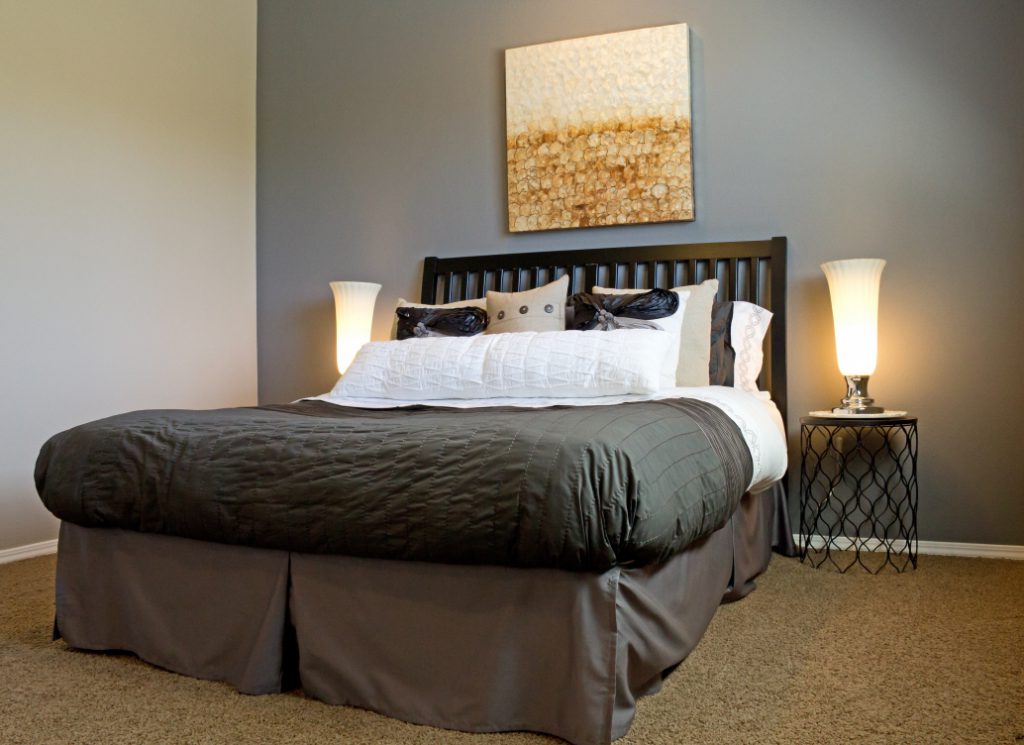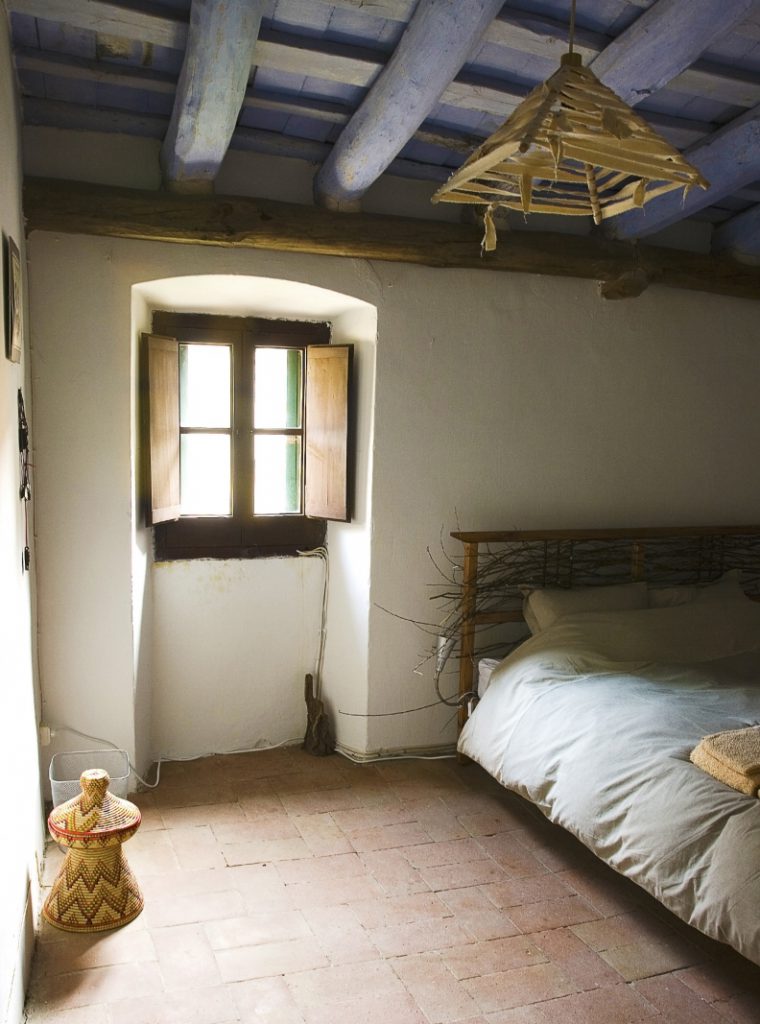
Tag Archives: rent
Korean Real Estate Site
Style a Master Bedroom as a Sleep Retreat
Adults spend more time in their bedroom than in any other room in their house. But you wouldn’t know it from the home sales process. Buyers and sellers alike often pay more attention to kitchens, master bathrooms, closets, and yards than they do to this vital space where they will usually spend more than a third of their 24 hours each day.
“Who spends that kind of time in the kitchen?” asks sleep expert Nancy H. Rothstein, founder of The Sleep Ambassador in Chicago, a source for education, consulting services, and resources that optimize healthy sleep.
Yet more attention is being paid to the importance of getting adequate sleep, from high-profile advocates like Arianna Huffington, who recently published her book, The Sleep Revolution: Transforming Your Life, One Night at a Time (Harmony, 2016), to medical professionals. “Fewer than six hours [a night] can lead to diseases — a higher rate of diabetes, obesity, cardiovascular problems, and even shorter life spans,” says Dr. Susheel Patil, clinical director of Johns Hopkins Sleep Medicine in Baltimore.
While there’s no magic figure for the amount of sleep one should get, Patil suggests adults try for seven to eight hours on average. Dr. Michael Breus, a board-certified sleep specialist in Los Angeles known as The Sleep Doctor, uses his household as an example of the variation. “I need between 6 1/2 and 7 hours while my wife needs between 8 and 8 1/2,” he says.
Buyers and sellers alike should strive to furnish a master bedroom that contributes to high-quality sleep. Updating or remodeling the room offers another benefit, says certified color consultant Michelle Mohlere, a salesperson with Gibson International in Los Angeles. A nicely designed bedroom is likely to bring in more money at resale than one without these touches, she says.
Sellers looking to better stage this room will also gain from the following six steps:
1. Stage the bed in a choice spot. Connecticut architect and author Duo Dickinson prefers the bed be set away from the room’s entrance to keep it out of the main circulation path. Kathryn Baker, vice president of design services with Polaris Pacific, a real estate sales and marketing firm in San Francisco, likes to place a bed in a spot so occupants can enjoy the best view — whether that’s inside (maybe toward a fireplace or favorite piece of art) or outdoor (with views of trees or water where possible). Chicago designer Michael Del Piero suggests pairing a bed with an upholstered headboard for those who like to sit up in bed and read; she dresses up the bed with decorative pillows, a duvet, and a throw to personalize it and make it more welcoming to tuck in for sleep.
2. Install the right window treatments. Minimal is the design mantra when it comes to much of the standard room décor today. But while no coverings in some rooms, such as kitchens and living rooms, allows in more light and views, some amount of treatment in a bedroom is needed to block outside light and provide privacy. Del Piero likes to use a blackout shade behind a transparent shade or drapes or a woven wood shade with blackout drapes. Baker favors motorized shades to make opening and closing a task that can be performed from the bed or set by a timer.
3. Use the right lighting. Dickinson discourages installing recessed cans since they chop up a ceiling and aren’t attractive to look at while in bed. He prefers task lighting from lamps on night tables or wall-mounted sconces. Michigan designer Francesca Owings likes hanging one decorative fixture in a ceiling’s center for an aesthetic punch. Sensitive sleepers might appreciate the new Good Night Biological LED bulbs that claim to help regulate a body’s natural circadian rhythm through the production of the hormone melatonin, which helps control sleep and wake patterns, says Breus.
4. Conceal or banish electronics. For years, scientists and health professionals have known about the danger of the blue light that comes from certain electronics equipment and adversely affects melatonin production, says Patil. But only recently have they suggested that you can enhance unwinding and falling asleep by turning off TVs, smartphones, and iPads at least an hour before bedtime. Shutting them off also helps train the brain that the bedroom is primarily a place to sleep rather than stay awake, Patil says. If the temptation is too great, home owners might consider making the master bedroom a no-electronics zone. Baker’s company furnishes model bedrooms in its residential projects without TVs and other electronics technology to demonstrate this idea. “People have responded favorably, and some put TVs in a second bedroom or home office” instead, she says.
5. Pick a soothing palette. Of course, color is a personal preference, but color experts can offer guidelines. “You can’t say one is soothing for all and will make a person feel calm,” says Jessica Boyer, a Chicago designer with Susan Fredman Design Group. Sue Wadden, director of color marketing for paint manufacturer Sherwin-Williams, says colors that aren’t extreme are more restful. “They’re neither too bold, dark, bright, or intense. Rather, soft and calming,” she says. Designer Kimba Hills of Rumba Style in Los Angeles prefers a palette of pale blues, greens, beiges, grays, and whites for the bedroom. Boyer also likes to bring in bedding in white and light creams because she finds they’re calming. “It’s the equivalent of sleeping in a cloud with nothing to distract me. What’s important isn’t what’s trendy but nurturing,” she says.
6. Add creature comforts. If the room’s size allows, consider adding a chaise, chair and ottoman, and night tables. Also, a large area rug or wall-to-wall carpeting can help deaden noise and provide warmth underfoot, says Owings. If the room is located so it opens directly to the outdoors, play this up. Mohlere says real access to bucolic scenery can contribute to a sense of tranquility even more than just viewing the outdoors can. If outdoor access isn’t possible, check to see that windows are operable for fresh air. Other amenities worth considering: a gas- or log-burning fireplace for coziness, artwork for eye candy, and good storage for tidiness. “Too much clutter is distracting,” Rothstein says.
At the end of the day — or the beginning of a new one — real estate pros can emphasize the master bedroom as one more “fabulous room where you spend time in your new home,” Rothstein says.
Barbara Ballinger is a freelance writer and the author of several books on real estate, architecture, and remodeling
Welcome to the Real Estate of California !
New Star Realty & Inv.
Real Estate
SELL for More,Buy for Less
FIND YOUR DREAM HOME!
How an Architect Can Save Your Listing
You likely have forged relationships with real estate lawyers, bankers, and appraisers, among other professionals, calling on their expertise when you and your client need help navigating an aspect of the transaction. Have you considered when you might need an architect’s point of view?
Recently, a real estate agent called me about a house she had listed that had a “unique” floor plan. The first floor was awkwardly designed, and there was no place that leant itself to an intuitive seating arrangement to simply relax and watch television. As soon as buyers walked in, they turned right back around and walked out. The agent told me that none of her buyers could envision living in the house.
Here’s where my perspective came in handy. As an architect, I’m an “idea guy,” and where people see problems with a home’s layout, I see opportunities. Like most architects, I have a vivid imagination and the ability to think and visualize in three dimensions. So when agents need a fresh set of imaginative eyes to look at a property, I’m the guy they often call.
So this agent wanted some ideas about how the house could be adapted to become more appealing to buyers. We spent an hour doing a walkthrough together, and I was able to visualize a simple renovation plan that she could present to her clients. I advised taking down a wall, moving a door to an adjacent room, and creating a proper entry foyer. The job would be far less extensive than she expected, and now armed with ideas, she was able to present the house in a new light. She had something to be excited about, and she could convey that excitement to her clients.
Focus on the Positive With Older Properties
Home inspections are designed to show buyers all the flaws in a home so they can make an educated decision about whether they want to purchase. Even if they like the location of a home, the home inspection report can take the wind out of their sails if it needs a lot of work. Soliciting the advice of an architect at this moment could help buyers keep their vision alive and refocus them on the positive aspects of the house.
I don’t tell them about rotted window trim or leaky gutters; I tell them about how they can open up the kitchen, let more light into the great room, add more garage space, add on a first floor master suite, or create outdoor living spaces, all while reassuring them about the structural integrity of the house. I advise on the feasibility of remodeling and the opportunities that lay hidden within a home. That feedback can help a buyer see the pros more than the cons and keep the transaction on track.
Build the Vision for New Construction
If you sell building lots or raw land, you know how important visualization can be. I’ve walked building sites with agents and their clients, and I ask the buyer what they would like their new house to be. Will it be private or will it make a statement? Will it need a walk-out basement? How large will it be?
Then we discuss the opportunities for each property. We talk about where the sun rises and sets. Which way will they approach the house? Where would the garage and driveway be? Is the lot too steep or does it have a drainage problem? Where are the view opportunities? Through this discussion, we end up determining which lot suits their goals for their new house best. The buyers can now more easily make a choice and buy a property with confidence.
Architects help practitioners and their buyers unravel the uncertainty that can block them from submitting an offer on a property. We don’t sell anything; we remove doubts and open doors to new opportunities. If you’re wondering whether architects “give away” free advice like I do, I can say that the smart ones will. For a few hours of their time, the architect can be introduced to potential clients who may be building or remodeling a house and need their services. Beyond that, the architect and agent get to know more about how they both work and relate to clients. If that goes well, it leads to valuable networking and mutual referrals.
If you don’t already know an architect, contact builders in your area for referrals or contact your local chapter of the American Institute of Architects. The AIA will have a membership directory that often describes each architect’s specialty. When you make friends with an architect, you will broaden your vision for properties while helping your clients be more confident in their decisions.
William Hirsch, author of Designing Your Perfect House, is a member of the American Institute of Architects. He’s the former president of the Delaware Society of Architects and a member of the National Council of Architectural Registration Boards.
I’m your Realtor. Welcome Home
We can Do just MORE than HOME !!
New Star Realty & Inv.
BUYING A HOME? We Can Help!
3 Things You Should Do Before Applying for Your First Home Loan
By Catherine Alford

Buying your first house is such an exciting time. You’ve finally decided not to send a rent check to someone anymore, and you’re now off on a journey to get something all your own. Sometimes getting your first home loan can be a challenge, though. Not everyone will qualify for a mortgage or be ready to make the payments on their first home.
However, there are a few things you can do before starting the home search process to make sure your finances are in order so that you have the best chance of securing a home loan at a great rate.
Here they are:
1. Pull Your Credit Report
You are entitled to a free credit report from each of the three credit bureaus every year at www.AnnualCreditReport.com. Before you look at any houses, be sure to pull this report. If you are planning to purchase a house with your spouse, they should pull their credit report too.
When you get your credit report, look for any adverse accounts that may cause a lender to disqualify you from a home loan. See if you can settle any outstanding debts or fix any errors that may be on your account. According to a Federal Trade Commission study, at least one in five people have errors on their credit reports that could affect their ability to get the best loans, so be sure to scan your report thoroughly. Does every account on your report match one you currently have? Is there something on there you don’t recognize? If so, send a letter to the credit bureau and ask them to make corrections. This can help improve your credit score, which will make you a more desirable borrower to mortgage lenders.
2. Increase Your Savings
When you apply for your first home loan, your lender will ask you for copies of all of your bank statements. They want to know how much money you currently have in your accounts. You should be genuine about this because you’ll have to explain any amount that you have in your accounts that is unusually large.
The best thing you can do is to prepare for this by increasing your savings. Work extra jobs, have a big garage sale, or cut back on your expenses and save the difference. All of this is good because you’ll want to save a large down payment as well so that you can own a large portion of your home from the beginning. A sizable down payment also helps to keep your monthly payment low.
3. Shop Around for a Mortgage Lender
When it comes time to get a mortgage, you shouldn’t go with the first lender who offers you a loan. Instead, email or call several lenders to get pre-approved for your mortgage. When you go through this process, you can see how well you work with each of the lenders, how responsive they are, and if you think they’ll help you moving forward with your loan. These lenders will often offer different interest rates and terms, and they will often have different fees. So, if you shop around, you’ll be more likely to get the best possible mortgage for you.
Ultimately, buying your first home is a very exciting time, but to ensure that the process goes smoothly, it’s important to do your research, make sure you are financially ready, and shop around for the best loan for you.
Credit to Catherine Alford




















